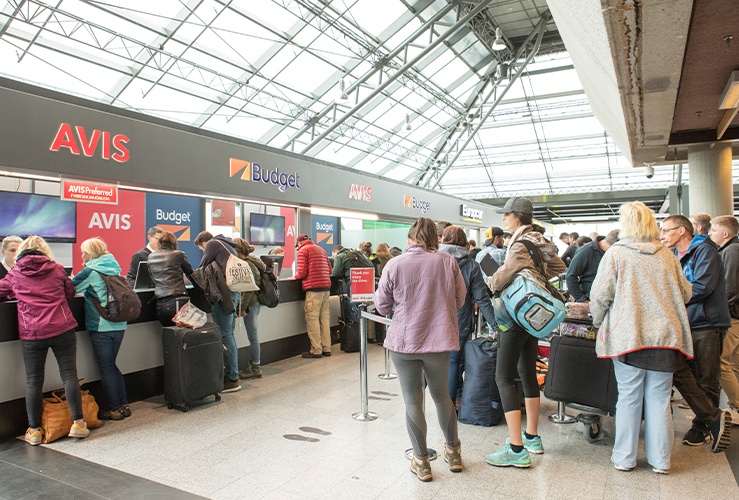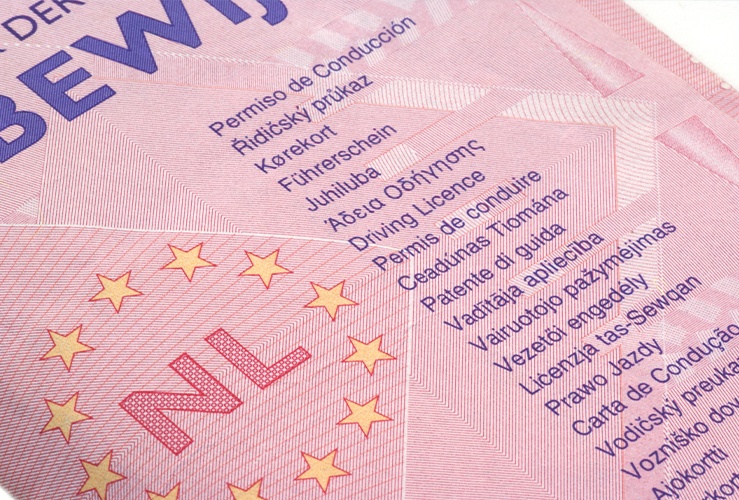Exploring mainland Europe with a car rental gives you and your family immense freedom.
With a European car rental you can pause where and when you wish, enjoy impromptu stopovers in towns and villages you like and avoid the cost of train journeys and the hassle of short-haul flights.

For car hire Europe advice, here are our top eight tips for bagging the perfect rental when hiring a car in Europe .
1. Consider pick-up and drop-off locations for your Europe rental car

Depending on your travel plans, it may be more convenient to pick up your rental car in Europe at one location and drop it off at another.
For example, if you want to visit Paris but also fancy some beach time in the South of France, you might pick up your car in the capital and drop it off in Marseilles.
Will there be additional costs for your Europe rental car if your pick up and drop off locations differ?
Yes, you should be aware that the car rental firm will charge a fee for this - ranging from 100 euros to 300 euros and maybe even more if your journey concludes in another country.
2. When renting a car in Europe, choose manuals instead of automatics
If you're used to an automatic transmission, beware that renting a car in Europe with this type of gearbox costs quite a bit more than a manual.
Since you've no doubt learned with a manual, consider booking your European rental car with a stick-shift if you want to save some extra cash.
3. Hunt down the best Europe car hire rental deal
Some of the best known car rental firms in Europe are Avis, Hertz, Budget, Europcar and Sixt.
What are the benefits of using larger European car rental firms?
Going for a bigger European car rental firm will likely result in a lower price (economies of scale) and will be a better option if you want to drop off your Europe rental car at a different location (because they have bigger networks).
How to find the best European car rental deal?
With so many promotions, offers and models available, it's worth spending some time finding the best deal when looking to rent a car for Europe.
If you’re in a rush, you might try Autoeurope.com - a car rental comparison site.
4. Pick up your Europe car rental at the airport? Or in town?

Airport rental locations tend to have lots of cars available, which means less time waiting. They are also much more convenient than picking up in a city. However, there is nearly always an additional fee for an airport pickup - although this may be comparable to the cost of transiting into the city anyway.
Airport rental locations also have longer opening hours than urban locales, which tend to be from 9 to 5 only.
Note: Train station pickup locations attract an additional fee, but can also be more convenient.
5. Fees may be charged for leaving Europe in your rental car
If you plan to leave the European Union and then return in your hire car to Europe, your car hire firm will probably levy an extra fee.
For example, if you start your trip in Croatia then drive in Serbia for a few days, you'll likely face an extra charge for your European rental car - ranging from 15 to 50 euros.
6. You might not even be allowed to drive outside the EU
Some European car hire companies stipulate you must not leave the European Union at all. They tend to have the following bordering nations in mind: Serbia, Bosnia & Herzegovina, Albania and Montenegro.
Car hire Europe: What do I need?
7. Make sure you have the right permits for driving in Europe
You need to take your driving licence with you to drive in Europe.
Check yours is still valid and renew your driving licence online if it’s expired or about to expire.
Do you need an International Driving Permit to drive in Europe?
You do not need an IDP to drive in the EU, Switzerland, Norway, Iceland or Liechtenstein if you have a photocard driving licence issued in the UK.
You might need one of these three International Driving Permits IDP to drive in some EU countries and Norway if you have a paper driving licence:
- 1926 IDP
- 1949 IDP
- 1968 IDP
The permit(s) you need depends on which country/countries you are planning to drive in. Check the following link for more information: https://www.gov.uk/driving-abroad/international-driving-permit
8. Buy a 'vignette' - if necessary
A vignette is an oval sticker displayed on your vehicle that proves the relevant motorway taxes have been paid.
If you only drive in the country where you picked up your rental, your car will already have this, but if you plan to drive your hire car into another country, you'll need to purchase an additional vignette for your Europe rental car, for the country you are driving to if they are required.
Vignette costs
Vignette fees vary widely. In Switzerland, for example, a vignette costs 40CHF. An additional vignette is obligatory for trailers and caravans.
What are the fines for driving without a vignette in Switzerland?
The fine for driving on a Swiss motorway without a vignette is CHF 200 (around £160) plus the costs of a vignette.
If you drive with a vignette that is not applied correctly or damaged, that is also considered driving without a vignette.
Vignette for Spain
In Spain, by contrast, a vignette for a regular car costs much less, with fines also lower.
Driving your own vehicle in Europe: What do you need to drive your own vehicle in Europe?
If you’re planning on driving your own vehicle in Europe, you will need to take your log book (V5C), your insurance certificate and your valid driving licence. You may also require an IDP.
European Breakdown Cover
It is also advisable to ensure that you have suitable European breakdown cover in place if you are going to be driving your own car in Europe. For more details on the European breakdown cover policies we offer at Start Rescue visit European Breakdown Cover Single Trip | startrescue.co.uk





